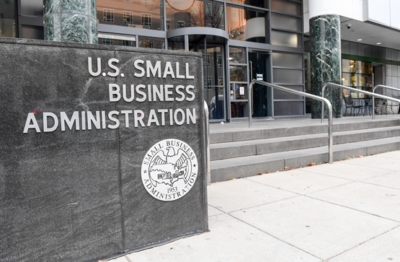
Exclusive
2 new tools aim to reverse decade-long decline in small business industrial base
The Biden administration developed a supplier base dashboard and a procurement equity tool to help agencies identify potential new small businesses to contract ...
The federal community has bemoaned the shrinking small business industrial base for much of the past decade. By one recent estimate, the number of small businesses receiving federal prime contracts in fiscal 2022 dropped by more than half since 2010.
But instead of just paying lip service to how important small businesses are — “they are the engine that runs the economy” is a common phrase that it seems like every member of Congress and every Small Business Administration administrator has repeated over the last 10 years — the Biden administration is equipping agencies with two new tools to find potential firms to replenishment the industrial base and compete for federal work.
“At a time when applications to start new small businesses in America are at an all-time high, it is imperative that the federal marketplace leverage this small business growth in supply chains that support agency missions, reverse the significant decline of small business participation in the federal supplier base over the last decade, and increase the share of federal contract dollars awarded to small disadvantaged businesses to 15% by 2025, as called for by the President [in a 2021 memo],” wrote Jason Miller, the deputy director for management at the Office of Management and Budget, in a new memo detailing these new tools, which Federal News Network obtained.
The first tool is a new supplier base dashboard that will help agencies track the total number of companies in their supply chain as well as the total number within a specific sector.
Additionally, OMB is releasing a procurement equity tool to help contracting officers and acquisition workers better identify potential new entrants in specific geographical regions of the country.
“Today, OMB is launching new guidance and tools that will strengthen the diversity and resilience of the marketplace for federal contracts by helping agencies find and retain businesses joining the marketplace for the first time,” said Lesley Field, the deputy administrator in the Office of Federal Procurement Policy, in a statement to Federal News Network.
The two new tools are part of the administration’s effort to address small business challenges, including equity in and diversity of the supplier base of federal contractors.
In June 2021, President Joe Biden issued a memo raising the governmentwide goals for contracting with small disadvantaged businesses to 15% by 2025. For 2021, SBA reported last July that agencies awarded 11% of all prime contracts worth $62.4 billion to SDBs. SBA hasn’t released the final 2022 numbers yet.
OMB says these new tools will support those and the broader efforts to reenergize the supplier base that is clearly in need of some help.
The market intelligence firm HigherGov reported on Feb. 13 that despite small firms winning $159 billion in federal contracts in 2022, small businesses owned by women and many minority groups saw a flat or declining share of contracts.
The report authors say despite more than 400,000 companies with active registrations to perform federal work, the number of firms winning contracts has been steadily declining.
“Major drivers include increased use of contract vehicles available to a limited number of firms, expanding regulations (such as cybersecurity requirements), and contract bundling that benefits larger firms and incumbents,” the report stated. “Moreover, in its small business efforts, the government has put almost exclusive focus on increasing the dollars being awarded to small businesses rather than increasing the number and diversity of small businesses winning contracts.”

This decline isn’t news for the Biden administration, or those that came before it. The issue always has been what to do about it?
Past efforts included trying to reduce the burden to get a schedule contract from the General Services Administration as well as a new regulations around contract bundling and the latest is a new small business strategy from the Defense Department.
This time around, OMB is taking advantage of data and technology capabilities to try to help agencies make inroads where many other efforts have fallen short.
OMB is creating an interagency effort to include SBA, the Commerce Department’s Minority Business Development Agency (MBDA), GSA and others to establish baselines and use data to track progress.
The first step OMB laid out is defining “new entrant” and “recent entrant” to help agencies begin to track their progress.
- A “new entrant” will be defined as an entity of any size that has received a prime Federal contract award over the micro-purchase threshold (MPT) for the first time or after having not received an award in the previous five fiscal years.
- A “recent entrant” will be defined as an entity of any size that has received a prime Federal contract award over the MPT during the three-year period following the fiscal year in which it is a first-time entrant.
“Entities that are awarded an indefinite delivery vehicle contract (IDV), blanket purchase agreement or basic ordering agreement are not considered a new entrant until a funded order valued at more than the MPT is issued under the IDV contract or agreement,” OMB’s memo stated. “
The new supplier database, created by GSA’s Office of Shared Solutions and Performance Improvements, will help the public and agencies track the size of the supplier base and the mix of new entrants, recent entrants and established vendors in the supplier base.
OMB says the new database, which lives in the Acquisition Gateway, will give agencies:
- the number of entities that have done business with the agency during the prior fiscal year;
- the breakdown of entities that are new entrants, recent entrants or established vendors; and
- the breakdown of entities by size (i.e., small or other than small) and socioeconomic status (i.e., SDB, women-owned small business, service-disabled veteran-owned small business, HUBZone small business).
“Tracking awards to entities, especially small business entities, that have never worked in the federal marketplace or have not done business in the Federal marketplace for a significant period of time but have value to offer to agencies is one important way to measure supplier diversity,” the memo stated. “At the same time, first-time entrants may struggle to be competitive. They will need time to acclimate to the structure and unique requirements of the federal marketplace and determine who needs their products and services, establish their footing with new customers, and begin to build a breadth of experience, name recognition and revenue to become strong competitors for future awards. By tracking awards to recent entrants, resource personnel and centers can gauge how well they are doing at assisting first-time entrants in building their resilience while the federal government works to maintain a more diverse supplier base.”
Additionally, OMB outlined the data agencies will use to measure progress including the number of awards and the dollars awarded to entities, as well as by Product Service Code, category management spend category and North American Industry Classification System (NAICS) codes.
Through the procurement equity tool, OMB says agencies can ensure they are meeting the administration’s goals of helping underserved communities.
OMB says because nearly 75% of entities registered in SAM.gov do not receive awards in any given fiscal year, the new tool will improve agencies’ analytic capability to find potential entities that could compete for contracts, in turn help diversify the supplier base.
The procurement equity tool helps agencies gather information about small businesses who:
- sell in sectors or geographic areas where the agency seeks increased representation in its contracting base; and
- have never received a contract award and might be interested in participating in an agency competition.
“Separately, SBA will work with Offices of Small Disadvantaged Business Utilization (OSDBUs), procurement center representatives, business opportunity specialists, APEX Accelerators, Small Business Development Centers and others to help small businesses improve the visibility of their profiles in the Dynamic Small Business Search, which contracting officers use to identify potentially available socioeconomic and other small businesses for contract opportunities,” the memo stated. “Agency OSDBUs, category managers and industry liaisons should work together with SBA, MBDA, the APEX Accelerators, trade associations and others to conduct concerted outreach, aided by the use of crowdsourcing tools, as appropriate, to target underserved communities that can support priority supply chains and other market segments of interest. These efforts should include encouragement and support to register businesses in SAM.gov in order to expand the potential contractor base and make these new entities more visible to future agency customers…”
Finally, OMB says it will establish governmentwide priorities for supply-chain strengthening and will consider categories of common spend covered by category management for priority attention, particularly if analysis undertaken by or presented to category managers indicates that small businesses are underrepresented in a common federal spending category or subcategory relative to the economy at large.
Recent data has shown the move to category management has negatively impacted the small business supplier base In 2021, a report from the Women’s Chamber of Commerce found that the federal acquisition process category management has led to a drop in the number of small business vendors participating in government contracting. Since 2017, small businesses showed a 24% fall. Women-owned suppliers dropped more than 22%, while veteran-owned suppliers dipped more than 17%.
OMB’s Miller said in the memo the administration recognizes rebuilding the small business supplier base will take time.
“By integrating the knowledge of supply chain experts with the collective thinking of program, acquisition, and small business offices working on common or related requirements, agencies will better position the federal government to figure out what represents a strong breadth and depth of entity participation in different market segments,” Miller wrote.
Copyright © 2024 Federal News Network. All rights reserved. This website is not intended for users located within the European Economic Area.
Jason Miller is executive editor of Federal News Network and directs news coverage on the people, policy and programs of the federal government.
Follow @jmillerWFED
Related Stories

SBA working to reform category management, reverse decline in small business contractors

Small business contract awards in 2021 reach all-time high
 Exclusive
Exclusive 


